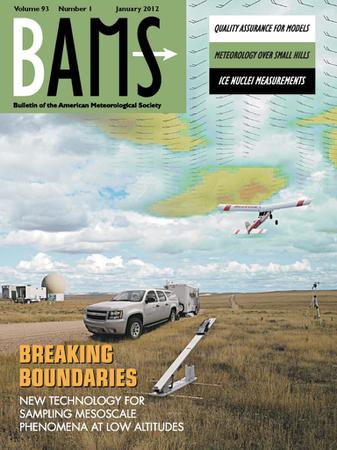实现方便用户的全天空表面长波向下辐射:总体方案和产品
IF 5.9
1区 地球科学
Q1 METEOROLOGY & ATMOSPHERIC SCIENCES
引用次数: 0
摘要
摘要 长波向下辐射(LWDR)是气候和水文模型中的一个重要驱动参数。与传统的地面测量相比,遥感在估算全球长波向下辐射量方面具有独特的优势。然而,就目前的遥感任务而言,作为典型的全球覆盖和每小时时间分辨率的卫星衍生 LWDR 产品,云层和地球辐射能量系统-同步(CERES-SYN)的大气和地表通量及云层顶层空间分辨率较低(1°×1°)。现有的长波辐射遥感产品在精度、时空分辨率以及解释和量化不同尺度长波辐射变化的能力方面仍有很大的改进空间。为了克服这些局限性,本文基于中分辨率成像分光仪(MODIS)的测量数据,开发了一种具有更高精度(全球均方根误差小于 30 W/m2)、高时空分辨率(每小时)和空间分辨率(5 km)的新的全球长波辐射产品。它是长期地球系统时空无缝辐射预算数据集(简称 LessRad)中的 LWDR 产品。作为第一个长期高分辨率、时空连续的 LWDR 产品(2002-2022 年,1 小时,5 公里),LessRad 在研究更精细尺度的 LWDR 时空变化方面显示出其优势。它还为分析陆地-大气相互作用和量化气候反馈等各种应用提供了宝贵的数据源,因此,可能有助于了解地球的能量预算和动态。本文章由计算机程序翻译,如有差异,请以英文原文为准。
Towards user-friendly all-sky surface longwave downward radiation from space: General scheme and product
Abstract Longwave downward radiation (LWDR) is an important driving parameter in climate and hydrological models. Compared to traditional ground-based measurements, remote sensing has unique advantages in estimating global LWDR. However, for current remote sensing missions, as the typical available satellite-derived LWDR product with global coverage and hourly temporal resolution, the Clouds and the Earth’s Radiant Energy System-Synoptic (CERES-SYN) top of atmosphere and surface fluxes and clouds has a low spatial resolution (1° × 1°). There is still much room for improvement of the existing remote sensing LWDR products in terms of accuracy, spatiotemporal resolutions, and the ability to explain and quantify the changes of longwave radiation at various scales. To overcome these limitations, this paper developed a new global LWDR product with improved accuracy (the RMSE < 30 W/m2 over the globe), high temporal resolution (hourly), and spatial resolution (5 km) based on Moderate Resolution Imaging Spectroradiometer (MODIS) measurements. It serves as a LWDR product within the Long-term Earth System spatiotemporally Seamless Radiation budget dataset (referred to as LessRad). As the first long-term high-resolution, spatiotemporally continuous LWDR product (2002-2022, 1 h, 5 km), the LessRad reveals its advantages in studying the spatiotemporal variability of LWDR on finer scales. It also provides a valuable data source for various applications, such as analyzing land-atmosphere interactions and quantifying climate feedback, and thus, is potentially helpful for understanding the earth’s energy budget and dynamics.
求助全文
通过发布文献求助,成功后即可免费获取论文全文。
去求助
来源期刊
CiteScore
9.80
自引率
6.20%
发文量
231
审稿时长
6-12 weeks
期刊介绍:
The Bulletin of the American Meteorological Society (BAMS) is the flagship magazine of AMS and publishes articles of interest and significance for the weather, water, and climate community as well as news, editorials, and reviews for AMS members.

 求助内容:
求助内容: 应助结果提醒方式:
应助结果提醒方式:


